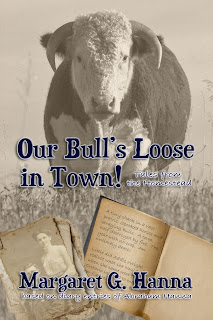 |
| Buy Here |
~*~*~*~
Martha Jane
Cannery was born in 1852 and Phoebe Ann Moses in 1860. Both were show women,
and were crack shots. Both were born in upper Midwest, and both had worked in
Buffalo Bill’s Wild West Show, but that is pretty much where the similarities
end.
 |
| Annie Oakley |
Annie Oakley (Phoebe Ann Moses) had a more stable life. Even as her father had
died when she was still very young, she never went west. She married and
remained married to the same man, Frank Butler. They met at a shooting contest.
Frank Butler was a fancy shooter, but Annie won the meet. After Frank licked
his wounds, they married two years later. It is said Annie took the name ‘Oakley’
from a neighborhood in Cincinnati, Ohio. If you go to google maps, it is still
there, not far from the Ohio River.
Annie joined
Frank’s traveling show, but before long Frank realized Annie was the best shot,
and the wanted attraction. He relinquished his climb to stardom and became
Annie’s business manager when they joined Buffalo Bill’s Wild West Show. One of
her feats was when she shot a cigar from Kaiser Wilhelm’s mouth.
 | |
| See how small Annie's waist is??? |
When I
visited the Buffalo Bill Center of the West Museum in Cody Wyoming, there were
artifacts from Annie’s time with the show, clothes and guns and things. She was
a small person. Sitting Bull called her: Little Sure Shot, and I can attest her
waist was tiny, amazingly so. She couldn’t have been more than 5’, but don’t
quote me on that. I based this statement on how small her clothes were.
Annie died
of that B-12 deficiency in 1926. She was 66 years old. Frank died 18 days
later.
Hers was a good life.
~*~*~*~*~
Now, Calamity Jane (Martha Jane Cannary) was
an entirely different animal altogether. Her parents, not the best in
reliability or reputation, died when she was only 12, leaving her to care for
her 5 siblings. Reportedly a big woman and strong (sort of manly), she
supported her family as well as she could. Some say she even went into
prostitution for a while. This is also where fact and fiction come into play.
Calamity Jane’s true actions were superseded by her spun autobiography and newsprint’s
tall tales.
 |
| Calamity Jane |
There is
more than one explanation for the ‘Calamity’, which are vague and nonsensical,
so I won’t go into it here. Her brothers and sisters fell out of history, too,
with Jane moving through life and their existence never mentioned. She dressed like
a man and did men’s work. She rode with the cavalry, saving one soldier on a
wild horse ride, after which someone called her Calamity. But who knows.
Everyone
thinks she was madly in love with Wild Bill Hickock, who was married. She may
have been fond of him, but Bill didn’t like her much. There’s another story
where she met him only a week or so, outside of Deadwood South Dakota, before
he was murdered, holding the ‘dead man’s hand’, a pair of black aces and a pair
of black eights.
Word has
spread Jane was a kind soul who helped tend the sick during a smallpox
epidemic, but on the whole, she sabotaged every good event in her life. She was
a terrible alcoholic. She supposedly married and had a child but gave up the
girl and wandered the country. She may have met Annie Oakley in the Buffalo
Bill Wild West Show, but her drinking was too much. She was cast adrift after a
short while. She was also reported to have ridden in other west shows that
toured the Midwest.
By 1903 she
was ill and destitute. She found her way near Deadwood where she died at the
age of 51. Her last wish was to be buried beside Bill Hickock in Deadwood.
Hers was a
sad life.
~*~*~*~
Many thanks
to:
Wikicommons,
public domain
And the
following websites:



















.jpg)

.png)